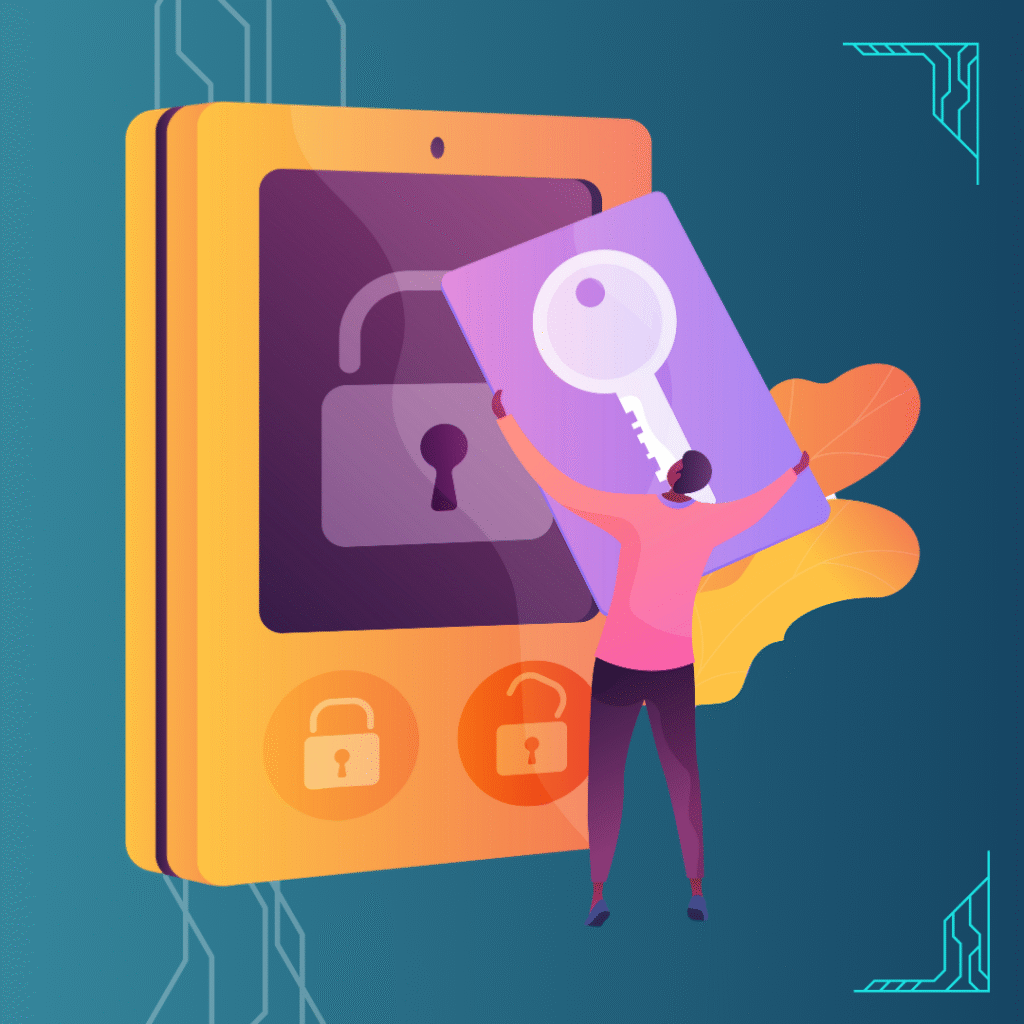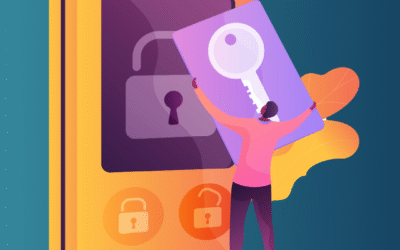Worried about who can enter your workplace?
Access control types define how people get in, where they can go, and when. These systems include familiar tools like keys and keypads. They also cover advanced options such as cards or biometrics.
By learning the basics, you can choose the best way to secure your business.
Mechanical Locks and Keys
What is it?: A mechanical lock uses a physical key to secure doors and control entry.
Advantages:
- Simple, affordable, and widely understood.
- Reliable, since it doesn’t rely on power or internet.
- Good for non-tech-savvy users who prefer to avoid IT systems.
Limitations:
- Keys can be lost, copied, or shared without permission.
- Businesses must assign keyholders to manage access. If the keyholder is absent or late, staff may be locked out.
- Changing locks when staff leave or roles shift adds cost and hassle.

Bottom Line: Mechanical locks are the most traditional access control type. They suit small teams or low-risk areas but lack the flexibility and tracking that modern systems provide.
Keypads and PIN Codes
What is it?: A keypad system grants entry when users enter a numeric code on a pad.
- Lower upfront cost than card or fob systems.
- No physical item to carry, ideal for gyms, warehouses, or backrooms.
- Easy to issue temporary or shared codes for contractors or delivery staff.
Limitations:
- Codes may be guessed or widely shared, reducing accountability.
- Cannot track individual users when multiple people share the same code.
- If one code leaks, anyone can gain entry until it is changed.

Card and Fob Systems
What is it?: Card and fob systems grant access when a credential is presented to a reader, which verifies and unlocks the door.
Approaches:
- Magnetic Stripe Cards – Low-cost but prone to wear and easy to copy.
- Proximity (RFID) Cards and Fobs – Widely used in offices and retail; convenient but can interfere with other contactless cards like EZ-Link.
- Smart Cards – Store encrypted data, offering stronger security and integration with time tracking or payment systems.
Advantages:
- Each card or fob is linked to an individual, making it possible to track who entered and when.
- Easy to issue, deactivate, and scale for SMEs.
- Familiar and quick for daily use.
Limitations:
- Cards can be lost, stolen, or shared.
- “Buddy punching” happens when employees tap in for colleagues.
- RFID interference can occur if cards are stored near transport or bank cards.
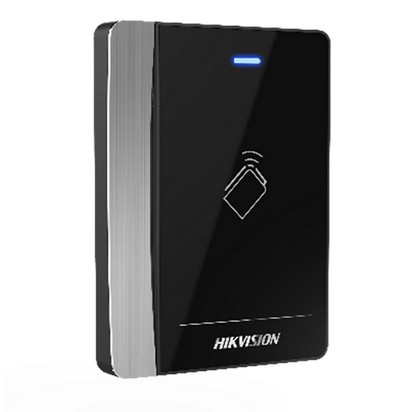
Biometric Access
What is it?: Biometric access systems use unique human traits such as fingerprints, facial features, or iris patterns to grant entry.
Approaches:
- Fingerprint Scanners – Most common and affordable. Accuracy can drop if staff have thin skin, worn fingertips, or dirty sensors.
- Facial Recognition – Hands-free and fast. Lighting conditions and camera angles can affect reliability.
- Iris Scanners – Highly secure but costly. Usually reserved for sensitive or high-security facilities.
Advantages:
- Credentials cannot be easily copied or shared.
- No need for keys, cards, or remembering codes.
- Strong security for sensitive areas.
Limitations:
- Hardware is more expensive than other types.
- Some users may face recognition issues.
- Privacy and data protection concerns must be addressed.
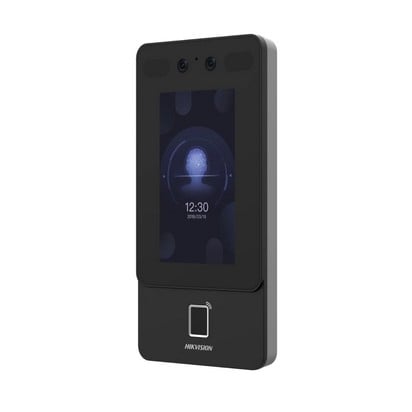
Mobile-Based Access
What is it?: Mobile-based access turns smartphones into digital keys, using apps, wallets, or temporary codes to unlock doors.
Approaches:
- Dedicated App – Most common today. Staff download a company-approved app that communicates with readers via Bluetooth or NFC.
- Wallet Integration – Newer systems place credentials directly into Apple Wallet or Google Wallet, removing the need for a separate app.
- Temporary Codes – Some solutions send SMS or email links, useful for visitors or contractors.
Advantages:
- Smartphones are the #1 choice for unlocking workplaces today.
- Cuts costs of printing cards or replacing lost keys.
- Access can be granted or revoked instantly through cloud systems.
Limitations:
- Requiring apps can cause staff resistance or privacy concerns on personal phones.
- Wallet-based access often needs newer phones or operating systems.
- SMS links are convenient but less secure for daily staff use.
- Devices can still run out of battery.
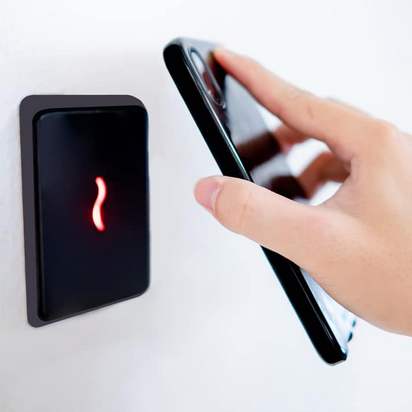
Integration with CCTV & PABX
Access control becomes stronger when paired with CCTV and PABX. CCTV records every entry and exit, providing useful evidence during disputes or security incidents. PABX intercoms allow staff to verify visitors remotely.
With this setup, there’s no need to walk to the door to unlock it, saving time and avoiding frustration for staff sitting nearby. For SMEs, these integrations improve safety, efficiency, and overall control without adding unnecessary complexity.
Example: When a courier arrives, staff can check the camera, speak via intercom, and unlock the door without leaving their desks.
Digital Access Control Models
While physical methods secure doors, digital access control models manage permissions in IT systems. The most common are Discretionary Access Control (DAC), Role-Based Access Control (RBAC), and Attribute-Based Access Control (ABAC).
These models define who can access files, networks, or cloud platforms. For businesses using modern systems, physical and digital access often overlap. Cloud-based logs, mobile apps, or biometric records show how both layers connect, creating a more complete approach to managing security.
Wrapping Up
Access control types give businesses practical ways to manage entry and improve security.
If you’re ready to take the next step, explore our door access control system page. Discover solutions that protect your workplace, save time, and give you greater control over daily operations.

